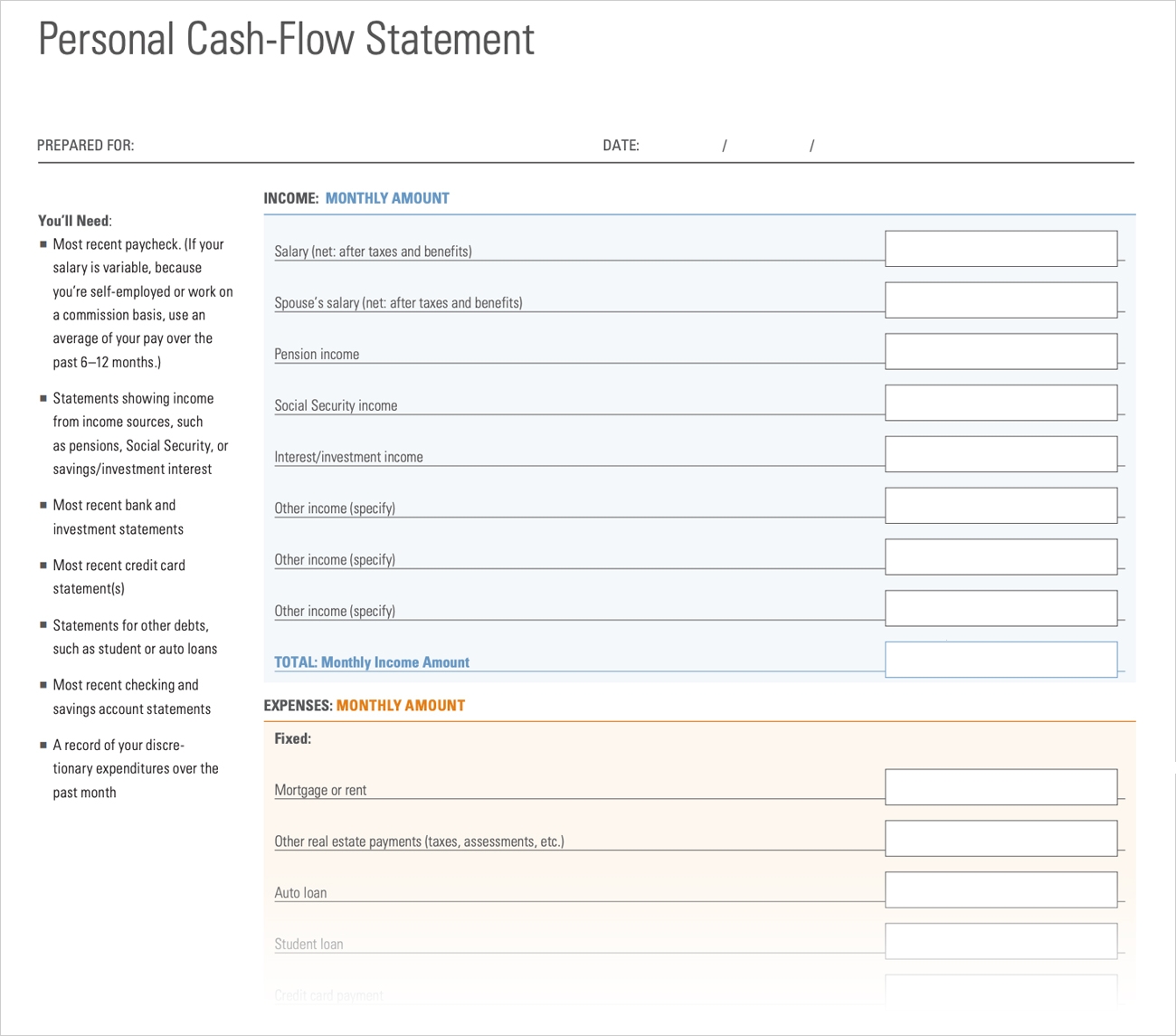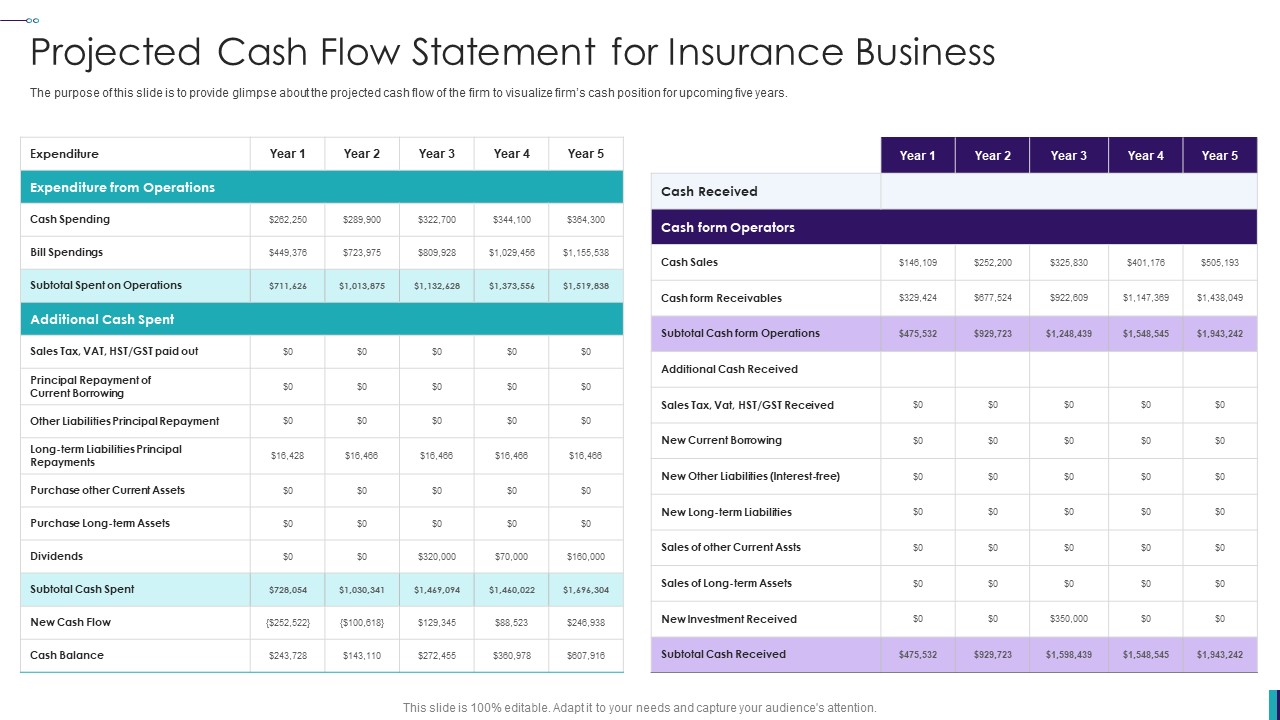

Finance
What Is Cash Flow From Financing Activities
Published: December 20, 2023
Learn all about cash flow from financing activities and its importance in finance. Discover how financing activities impact a company's overall financial health.
(Many of the links in this article redirect to a specific reviewed product. Your purchase of these products through affiliate links helps to generate commission for LiveWell, at no extra cost. Learn more)
Table of Contents
- Introduction
- Definition of Cash Flow from Financing Activities
- Purpose of Cash Flow from Financing Activities
- Components of Cash Flow from Financing Activities
- Sources of Cash Inflows from Financing Activities
- Uses of Cash Outflows from Financing Activities
- Example of Cash Flow from Financing Activities
- Importance of Cash Flow from Financing Activities
- Analysis of Cash Flow from Financing Activities
- Conclusion
Introduction
When it comes to understanding the financial health and performance of a company, analyzing its cash flow is essential. Cash flow provides valuable insights into how a company generates and manages its cash, allowing investors and stakeholders to assess its ability to meet obligations, invest in growth, and weather financial challenges.
One crucial element of cash flow analysis is cash flow from financing activities. This specific category in the statement of cash flow captures the inflows and outflows of cash arising from a company’s financing activities. By examining this section, stakeholders can evaluate how a company funds its operations, manages debt, issues stocks or bonds, repurchases shares, and pays dividends.
In this article, we will delve into the definition, purpose, components, and significance of cash flow from financing activities. Furthermore, we will explore the sources of cash inflows and the uses of cash outflows within this category. By understanding the intricacies of cash flow from financing activities, you will gain a comprehensive understanding of a company’s financial position and its capacity to access and manage capital.
Definition of Cash Flow from Financing Activities
Cash flow from financing activities refers to the cash inflows and outflows resulting from a company’s financing activities, including raising capital, repayments, and distributions to investors. It is an essential component of the statement of cash flows, which provides insights into how a company gains and utilizes funds.
In simpler terms, cash flow from financing activities highlights the cash received and paid in relation to the company’s financing decisions and activities. These activities typically involve transactions with owners, creditors, and other external parties, and they affect the company’s capital structure and shareholder equity.
The cash flow from financing activities section is found in the statement of cash flows, a financial statement that details the inflows and outflows of cash during a given period. The other two sections of the statement of cash flows are cash flow from operating activities and cash flow from investing activities. Together, these sections provide a comprehensive outlook on how a company generates and utilizes cash.
It is important to note that cash flow from financing activities includes both cash inflows and outflows, providing a complete picture of a company’s financing-related cash transactions. The positive cash inflows suggest money coming into the company, while the negative cash outflows represent cash leaving the company.
Examples of cash inflows from financing activities include issuing stocks or bonds, obtaining loans or credit, and receiving funds from shareholders or owners. On the other hand, cash outflows may include dividend payments to shareholders, debt repayments, or stock buybacks.
By analyzing the cash flow from financing activities, investors, analysts, and stakeholders can assess how a company is funding its operations and growth initiatives, as well as gaining insights into its financial structure, debt management, and distribution policies.
Purpose of Cash Flow from Financing Activities
The purpose of cash flow from financing activities is to provide insights into how a company raises and utilizes cash to finance its operations and growth. It helps stakeholders, including investors, creditors, and analysts, understand the company’s financial structure, its ability to access capital, and its management of debt and equity.
By examining the cash flow from financing activities, stakeholders can evaluate the stability and sustainability of a company’s funding sources and assess its capacity to meet financial obligations. This section allows them to assess the company’s financial health, capital structure, and potential risks and opportunities.
Some specific purposes of analyzing the cash flow from financing activities include:
- Evaluating capital raising activities: The cash flow from financing activities provides information on how a company raises capital, such as through issuing stocks or bonds, obtaining loans, or securing credit arrangements. By assessing these activities, stakeholders can gauge the company’s ability to access funds and its strategies for financing growth and expansion.
- Assessing debt management: This section enables stakeholders to evaluate a company’s management of debt by analyzing the cash outflows related to loan repayments and interest payments. It helps determine whether the company is able to meet its debt obligations and maintain a healthy debt-to-equity ratio.
- Understanding dividend distributions: Cash flow from financing activities highlights the cash outflows related to dividend payments to shareholders. This information is crucial for investors seeking income from their investments and for evaluating a company’s distribution policies and commitment to returning value to shareholders.
- Monitoring stock buybacks: The cash flow from financing activities section also reveals any outflows of cash related to stock repurchases. Stock buybacks indicate that a company is using its cash to buy back its own shares from the market, which can have implications on shareholder value and the company’s capital structure.
Overall, the purpose of analyzing cash flow from financing activities is to gain a comprehensive understanding of how a company raises and manages its funds, and to assess the potential impact of these activities on its financial stability and strategic direction.
Components of Cash Flow from Financing Activities
The cash flow from financing activities section encompasses several components that provide insights into a company’s financing activities and cash transactions. These components depict the inflows and outflows of cash resulting from various financing decisions and transactions.
Below are the key components typically included in the cash flow from financing activities:
- Proceeds from issuing stocks or bonds: This component represents the cash received from issuing new shares of stock or bonds. Companies often resort to issuing stocks or bonds to raise capital for various purposes, such as funding expansion plans, repaying debt, or investing in research and development.
- Repayments of long-term debt: This component reflects the cash outflows related to the repayment of long-term debt, including principal repayments and interest payments. It provides insights into a company’s debt management and its ability to meet debt obligations.
- Distributions to owners or shareholders: This component includes the cash outflows related to dividend payments or distributions to owners, such as shareholders or partners. It highlights the company’s commitment to returning value to its shareholders and its distribution policies.
- Repurchase of company shares: This component represents the cash outflows resulting from the buyback of the company’s own shares from the market. Stock buybacks are often carried out to enhance shareholder value and improve the company’s capital structure.
- Proceeds from new loans or credit: This component captures the cash inflows resulting from obtaining new loans or credit. It provides insights into a company’s ability to secure additional financing from lenders and creditors.
- Repayment of loans or credit: This component reflects the cash outflows associated with loan repayments, including both principal and interest payments. It demonstrates a company’s commitment to managing its debt and meeting its financial obligations.
These components facilitate a comprehensive understanding of a company’s financing activities and their impact on its cash flow. By analyzing these components, stakeholders can evaluate the sources of cash inflows and the uses of cash outflows, providing valuable insights into a company’s financial health, its debt management, and its commitment to returning value to shareholders.
Sources of Cash Inflows from Financing Activities
The cash flow from financing activities section includes various sources of cash inflows that arise from a company’s financing decisions and transactions. These sources represent the influx of cash into the company resulting from external financing activities. Understanding these sources provides valuable insights into how a company raises capital to support its operations and growth initiatives.
Below are some common sources of cash inflows from financing activities:
- Issuing stocks or bonds: One of the primary sources of cash inflows is the issuance of new stocks or bonds. When a company decides to raise capital by issuing shares or bonds to investors, it generates cash inflows in exchange for ownership or debt securities.
- Proceeds from loans or credit: Companies often secure loans or credit from banks, financial institutions, or other lenders to finance their operations or particular projects. The proceeds from these loans or credit arrangements serve as cash inflows.
- Contributions from owners or shareholders: When owners or shareholders of a company contribute additional capital, whether in the form of cash or other assets, it results in cash inflows. These contributions strengthen the company’s financial position and provide capital for growth.
- Government grants or subsidies: In some cases, companies may receive grants or subsidies from the government or other entities to support their operations, research initiatives, or environmental programs. These grants or subsidies are considered cash inflows in the financing activities section.
- Proceeds from the sale of assets: If a company sells its assets, such as property, equipment, or investments, it generates cash inflows. These proceeds can be utilized for various financing purposes, including debt repayment or funding new projects.
It is important to note that while these sources provide cash inflows, they also have corresponding effects on the company’s capital structure and ownership. For example, issuing stocks or bonds leads to the dilution of existing shareholders’ ownership, while receiving loans or credit increases the company’s debt obligations.
By understanding the sources of cash inflows from financing activities, stakeholders can assess a company’s ability to raise capital, its funding strategies, and its capacity to secure external financing to support its financial objectives.
Uses of Cash Outflows from Financing Activities
The cash flow from financing activities section of the statement of cash flows highlights the uses of cash outflows resulting from a company’s financing decisions and transactions. These uses represent the outflow of cash from the company as a result of its financing activities. Understanding these uses provides valuable insights into how a company manages its debt, distributes dividends, and repurchases its own shares.
Here are some common uses of cash outflows from financing activities:
- Debt repayments: Companies often incur debt to support their operations or fund expansion. Cash outflows are incurred when the company makes repayments towards the principal and interest of its outstanding loans or credit.
- Dividend payments: Dividends are a distribution of profits to shareholders as a return on their investment. Cash outflows occur when a company pays dividends to its shareholders, providing them with a share of the company’s earnings.
- Stock buybacks: Companies often repurchase their own shares from the market as part of their capital management strategies. Cash outflows result from these stock buybacks, reducing the number of outstanding shares and potentially increasing the value of the remaining shares.
- Repayment of capital contributions: In certain cases, owners or shareholders may have made capital contributions to the company. When these capital contributions are repaid, it results in cash outflows from financing activities.
- Repayment of debt securities: If a company has issued bonds or other debt securities, it incurs cash outflows when it repurchases or redeems these debt securities before their maturity dates.
These uses of cash outflows from financing activities impact the company’s financial structure, debt management, and capital allocation decisions. For example, debt repayments reduce the company’s overall liabilities and improve its debt-to-equity ratio, while dividend payments reward shareholders and potentially attract investors.
By analyzing the uses of cash outflows from financing activities, stakeholders can assess how a company manages its obligations, distributes profits to shareholders, and balances its financing decisions. It provides insights into the company’s commitment to debt management, returning value to shareholders, and maintaining sustainable capital structures.
Example of Cash Flow from Financing Activities
To better understand cash flow from financing activities, let’s look at an example. Suppose Company X, a fictional manufacturing company, recently released its statement of cash flows, which includes the cash flow from financing activities section. Here is a breakdown of the various components within this section:
- Proceeds from issuing stocks: Company X recently issued 100,000 shares of common stock at $10 per share, resulting in a cash inflow of $1,000,000.
- Repayments of long-term debt: Company X made principal repayments on its long-term debt, totaling $500,000, and also paid $50,000 in interest on its outstanding loans.
- Distributions to owners: The company distributed $200,000 as dividends to its shareholders as a return on their investments.
- Repurchase of company shares: As part of its capital management strategy, Company X repurchased 50,000 shares of its own stock from the market for $12 per share, resulting in a cash outflow of $600,000.
- Proceeds from new loans: Company X secured a new loan of $1,500,000 from a financial institution, providing a cash inflow to support its growth initiatives.
- Repayment of loans: The company made repayments on its existing loans, including principal and interest payments, totaling $300,000.
Based on this example, we can see that Company X generated cash inflows of $1,000,000 from the issuance of stocks and secured a loan of $1,500,000. On the other hand, the company had cash outflows of $500,000 for debt repayments, $50,000 for interest payments, $200,000 for dividend distributions, and $600,000 for stock buybacks.
By analyzing these numbers, stakeholders can gain insights into how Company X financed its operations and growth. The company raised funds through the issuance of stocks and new loans, while managing its debt through repayments. Additionally, it returned value to its shareholders through dividend distributions and adjusted its capital structure through stock buybacks.
This example demonstrates how the cash flow from financing activities section provides a clear picture of a company’s financing decisions and their impact on its cash flow. It enables stakeholders to assess the sources and uses of cash, understand the company’s capital structure, debt management practices, and commitment to shareholder value.
Importance of Cash Flow from Financing Activities
The cash flow from financing activities section is of significant importance when analyzing a company’s financial health and performance. It provides valuable insights into a company’s ability to access and manage capital, make debt repayments, distribute profits to shareholders, and maintain a sustainable financial structure. Here are some key reasons why the cash flow from financing activities is essential:
- Evaluating capital structure: Analyzing the cash flow from financing activities helps stakeholders assess a company’s capital structure, which refers to the mix of debt and equity used to finance its operations. By examining the cash inflows and outflows related to debt repayments, stock issuances, and buybacks, stakeholders can evaluate the company’s leverage, debt management strategies, and impact on shareholder equity.
- Assessing financial stability: The cash flow from financing activities provides insights into a company’s financial stability. It helps stakeholders evaluate the company’s ability to raise capital when needed, repay debt obligations, and manage its cash flow effectively. A stable and sustainable financing structure ensures the company’s long-term viability and ability to navigate financial challenges.
- Measuring liquidity: Cash flow from financing activities impacts a company’s liquidity, which refers to its ability to meet short-term financial obligations. By evaluating the cash inflows and outflows from financing activities, stakeholders gain insights into the company’s cash position and its capacity to handle operating expenses, debt repayments, and other financial commitments.
- Examining dividend policies: For investors seeking income from their investments, the cash flow from financing activities section provides information on dividend distributions. By analyzing dividend payments, stakeholders can assess a company’s commitment to returning value to shareholders and potentially evaluate its dividend sustainability and growth potential.
- Understanding investment decisions: The cash flow from financing activities helps stakeholders understand a company’s investment decisions. By examining the sources and uses of cash, stakeholders can assess how the company is financing its growth initiatives, whether through stock issuances or new loans, and evaluate the impact on shareholder value and long-term profitability.
Overall, the cash flow from financing activities plays a critical role in understanding a company’s financial position, capital structure, debt management practices, and commitment to shareholder value. It provides valuable insights for investors, creditors, and analysts to make informed decisions, assess risks, and evaluate the company’s ability to meet financial obligations and sustain long-term growth.
Analysis of Cash Flow from Financing Activities
When analyzing the cash flow from financing activities section, stakeholders can gain valuable insights into a company’s financial health, capital structure, and financing decisions. By conducting a thorough analysis, investors, creditors, and analysts can make informed decisions and understand the implications of a company’s financing activities. Here are some key aspects to consider when analyzing cash flow from financing activities:
- Trends and patterns: Evaluate the trends and patterns in the cash flow from financing activities over multiple periods. Look for consistency or changes in the sources and uses of cash, as well as any significant fluctuations. This analysis provides insights into a company’s financing strategies and how they may evolve over time.
- Debt management: Assess the company’s debt management practices by examining the cash outflows related to debt repayments and interest payments. It is essential to evaluate if the company is effectively managing its debt obligations and maintaining a healthy debt-to-equity ratio. Excessive debt payments or an increasing debt burden may raise concerns about the company’s financial stability.
- Capital structure: Analyze the sources of cash inflows, such as stock issuances or new loans, and the uses of cash outflows, such as dividend payments or stock buybacks. This analysis provides insights into the company’s capital structure, its funding strategies, and the impact on shareholder equity. It helps determine if the company relies heavily on debt or if it maintains a balance between debt and equity financing.
- Shareholder value: Examine the cash outflows related to dividend distributions and stock buybacks to assess the company’s commitment to returning value to shareholders. Evaluate if the dividend payments are sustainable and if the company is efficiently managing its shareholder base. Additionally, analyze the impact of stock buybacks on the company’s share price and its potential implications for shareholder value.
- Investment decisions: Evaluate the cash inflows related to issuing stocks or bonds and the uses of cash outflows for debt repayments or acquisition of assets. This analysis helps in understanding how the company raises funds for investment and expansion. Evaluate if the company is effectively utilizing its financing activities to support growth initiatives and generate long-term value for shareholders.
By conducting a comprehensive analysis of the cash flow from financing activities, stakeholders can assess a company’s financial position, its ability to access and manage capital, and its commitment to shareholder value. This analysis aids in making informed investment decisions, evaluating risks associated with financing activities, and understanding the company’s long-term financial sustainability.
Conclusion
The cash flow from financing activities section of a company’s statement of cash flows provides crucial insights into how the company raises capital, manages debt, distributes profits, and maintains its financial structure. By analyzing this section, stakeholders can gain a comprehensive understanding of the company’s financing decisions and their impact on its cash flow and overall financial health.
Through the examination of various components within the cash flow from financing activities, such as proceeds from issuing stocks or bonds, debt repayments, dividend payments, and stock buybacks, stakeholders can assess the company’s capital structure, debt management practices, and commitment to shareholder value. They can evaluate the sources of cash inflows and the uses of cash outflows, allowing for a comprehensive analysis of the company’s financing strategies and their alignment with its long-term goals.
Moreover, analyzing the cash flow from financing activities section helps stakeholders understand the company’s liquidity, investment decisions, and financial stability. It provides insights into the company’s ability to access and manage capital, assess its debt obligations, and allocate resources effectively.
To conduct a thorough analysis, stakeholders should examine trends and patterns, evaluate debt management practices, assess the company’s capital structure, and understand the implications of financing decisions on shareholder value. By doing so, they will be better equipped to make informed investment decisions, assess the company’s risk profile, and gauge its long-term financial sustainability.
In conclusion, the cash flow from financing activities plays a vital role in understanding a company’s financial position, financing strategies, and commitment to shareholders. It provides valuable insights into how the company raises and manages capital, and it is an essential component of financial analysis for investors, creditors, and other stakeholders seeking to evaluate a company’s financial health and performance.














